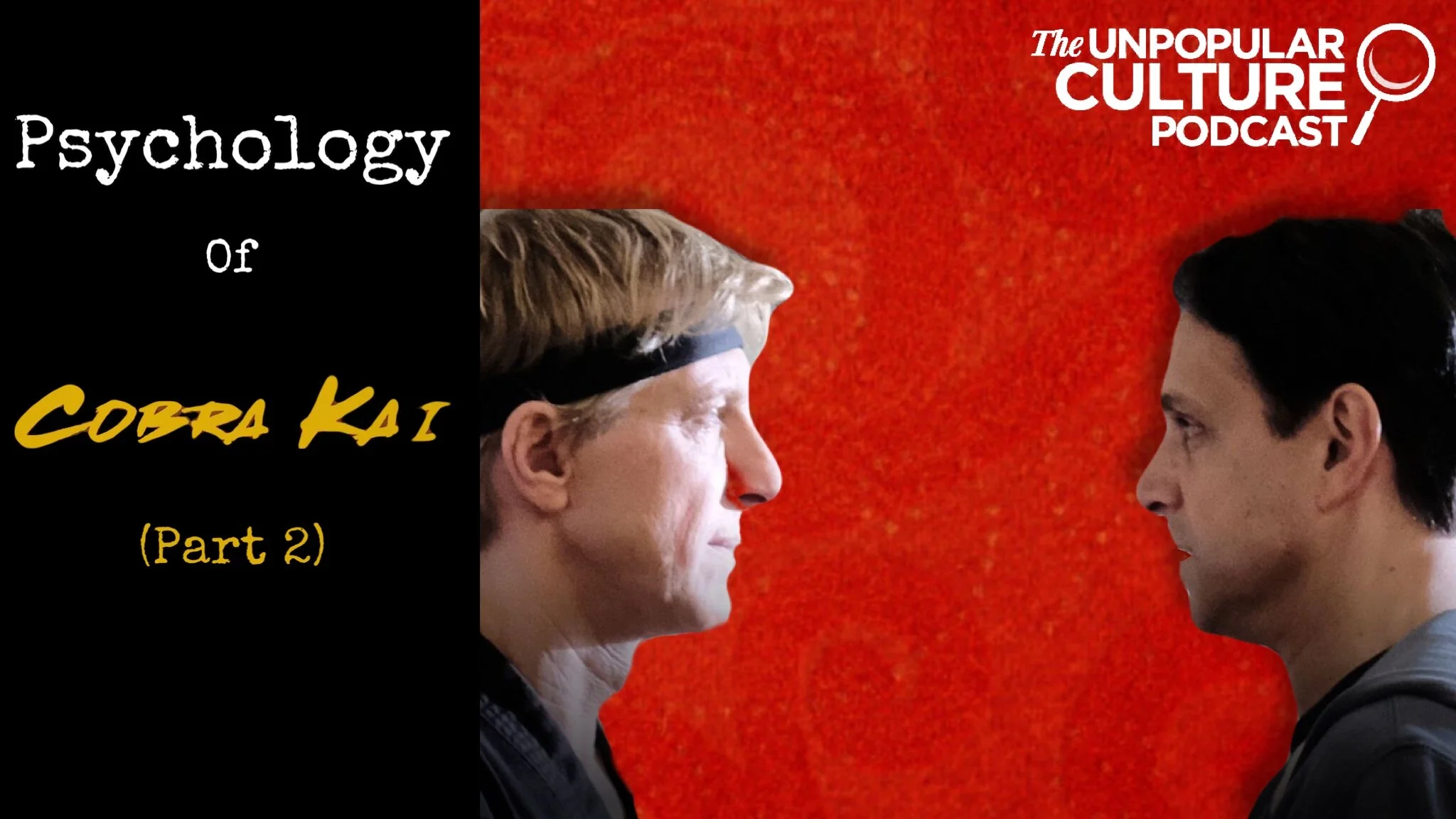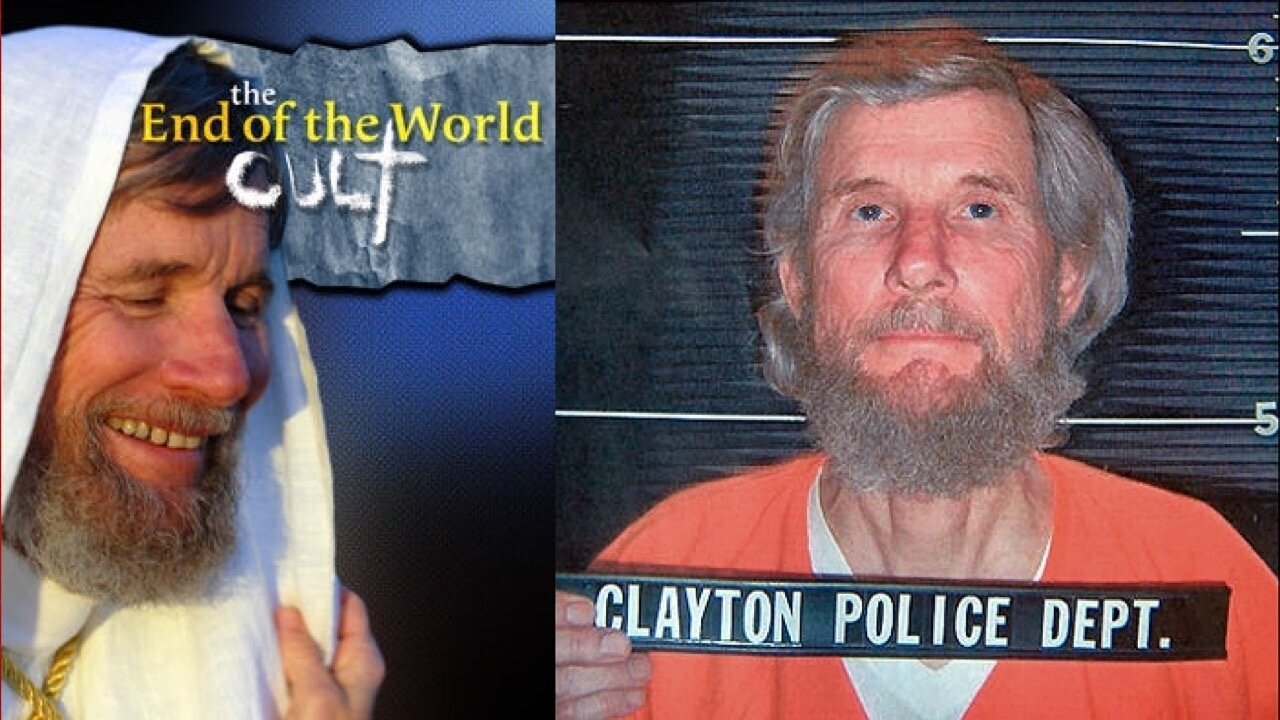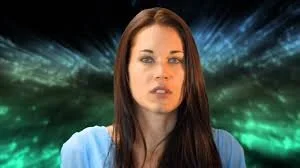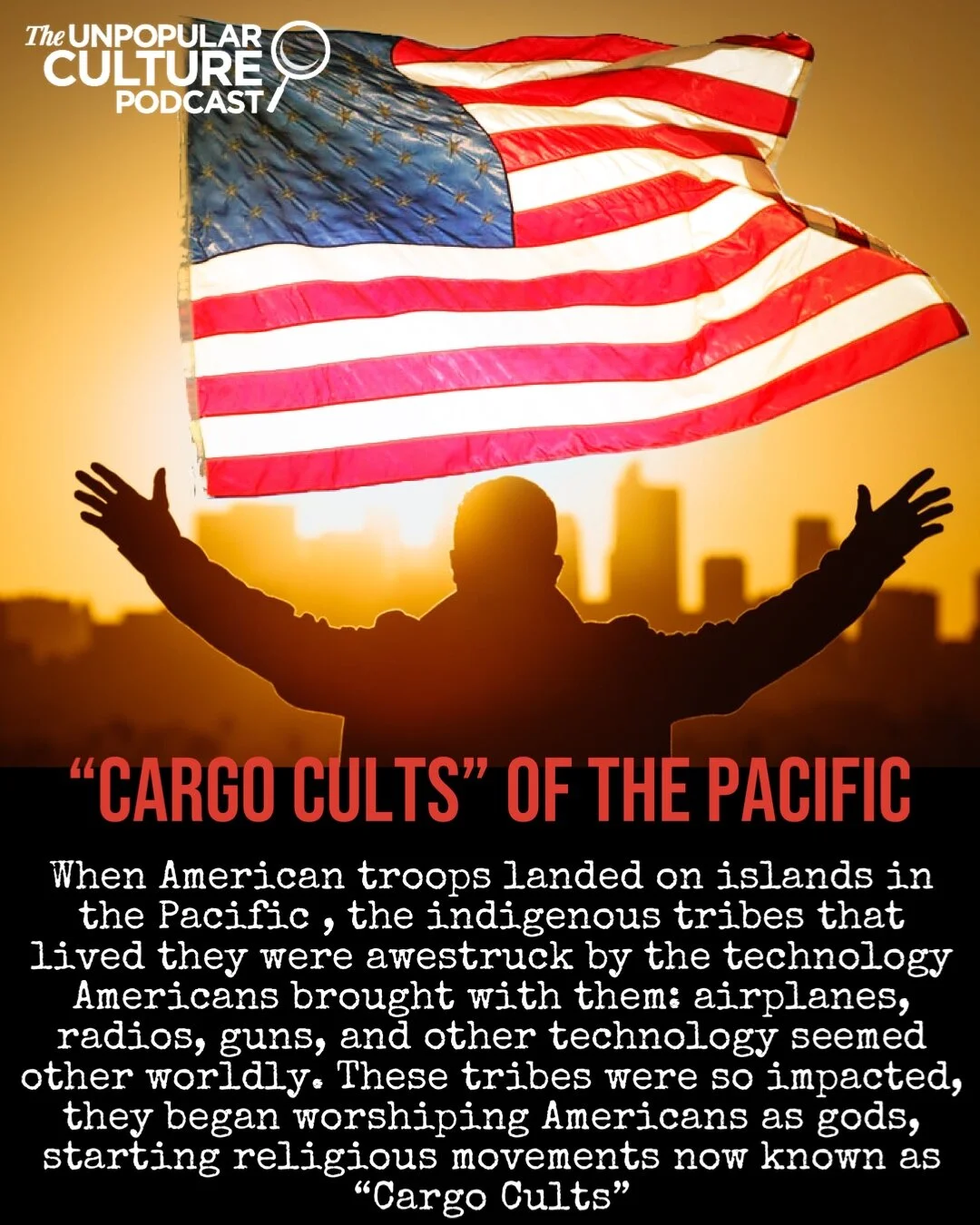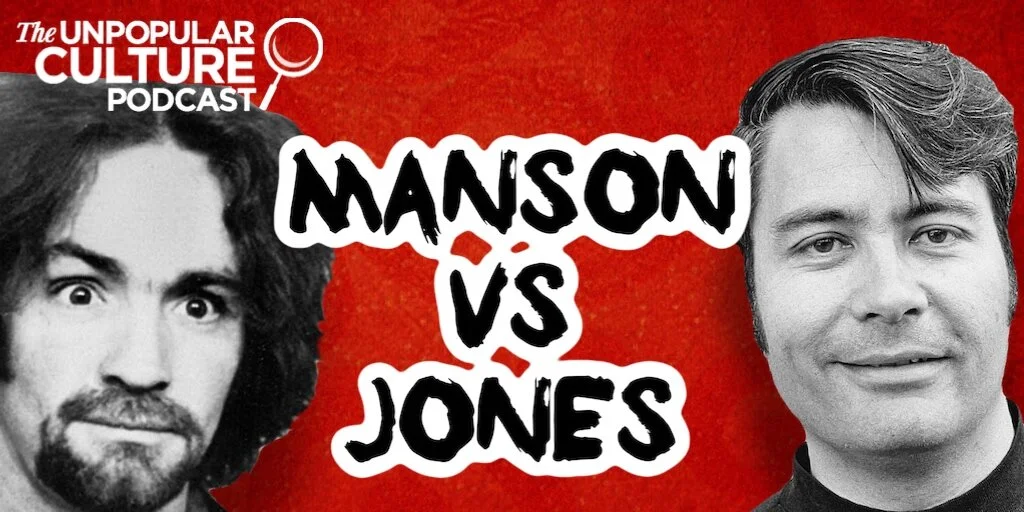👇Watch Below👇
In this week's episode, Professor Michael Drane explores the Strong City Cult and what happens the day after doomsday. How do they live with the cognitive dissonance? What do they say to their leader once the prophecy fails?
Stay safe out there friends, and we hope you enjoy the show.
The Day After Doomsday Show Notes
What does it mean to believe in something? I have been thinking about this question a lot lately. We generally regard belief as a good thing. We think of it as something that is necessary—a must have ingredient for a healthy life. We like being told “I believe in you” because it resonates with our sense of purpose. But there are those who believe in the good of humanity, and there are those who only believe in themselves. Alexander Hamilton said, “if you don’t stand for something, you will fall for anything.” Undoubtedly, having a sense of belief gives humans a sense of purpose. It adds flavor to our lives, but we also must be careful about what we choose to believe in. Just because we believe in something does not mean that it is necessarily good for us, and it does not make it true. As Oscar Wilde said, “a thing is not necessarily true because a man dies for it.”
When we are children, our belief fuels our imagination. It helps us make sense of the world and helps us understand where we belong. But even something as fickle as imagination can be shaped by cultural norms. Take Santa Claus and the Easter Bunny for example. Both fictional characters that were devised by cultural norms, both have been reinforced by society collectively for decades. Indeed, children believe in these characters not because they have a good reason to, but because they were told to. Even more, there is a payoff for that belief. Children believe in Santa Claus because they know that if they are good, they will receive presents at Christmas. Seems like a good deal, right?
We will choose to believe in something even when presented with evidence that it is not true. Take Santa Claus, for example. Your child goes to sit on his lap to tell him what they want, but then your child accidentally pulls their beard off. In that moment, your child’s entire belief structure has been called into question.
“Oh my god! Who is this man? Is Santa not real?” Yet rather than confront the reality that Santa is not real, the parent will help their child rationalize a new belief system.
“Oh! This is Santa’s helper. Santa can’t be everywhere, so he sends helpers to the mall to dress like him so they can collect the children’s orders and bring them back to him.”
This example highlights the obvious truth that once our beliefs are challenged, it is easier to make up a new belief system that explains why the old system did not work than to admit to oneself that it is not true. In this way, we avoid searching for the truth.
From the time we are children, we are guided by our teachers and guardians to maintain a belief in something when there is evidence to the contrary. Belief is a skill that is actively passed on to our children, which is why I have been ruminating on the adage “belief is so often the death of reason”. The difference between truth and belief is that the truth is inconvenient. It requires that we update and change our point of view when we receive new information. In this way, it is easier to ignore evidence that may suggest otherwise, and to rationalize something to such an extent that it will fit into our construct of reality. This is the exact same process that occurs in a cult.
To live in a cult is to live in a world of rationalizations. Take for example living in a religious cult. It is like playing on the playground with your friends. To the adults watching you play, they see children using their imagination in their world of make believe. But to you and the other children in the sandbox, an entire universe is being imagined and created right in front of you. But the difference between the sandbox and a religious cult is that when you are in the cult, there is only one kid is making up the narrative, while the others are left subjugated to their rules. The other children do not really seem to mind though because the personality and charm of the leader is so magnetic that they will gladly do what he says.
“You build that sandcastle right there”
“You guys dig a moat over there”
When you listen to people who have left cults describe what it is like to leave their sandbox, they liken it to leaving a fantasy world. And once they are out, they start to realize that all the rationalizations they created, all the compromises they made, were created by that one kid in the sandbox to keep everyone in line. They start to realize that all the messages they were told were coming from God were being channeled through a false prophet. A con artist.
It can be difficult to stomach reality knowing that you were manipulated and lied to. You trusted them and they betrayed your trust by using it to their advantage. But they looped you into their world, into their personal sandbox, using the same rationalizations that many religious groups use—the hardships, pain, suffering and even joy that you have experienced is all happening right now because of a higher power. A higher power that none of you can see or talk to. Except for, of course, the Cult Leader.
And this is where things start to go awry. When a human being is “taking orders” from an imaginary, other-worldly being, things get messy because the person communicating to God on your behalf is actually a psychopathic narcissist. Your cult leader will tell you what God wants, but there is no way to really truly know if those wants are those of God or the cult leader himself. This is because cults run on a currency of belief and faith. You will believe what they say because you have faith in them, and through that faith, their demands are rationalized. Demands like “God told me I am supposed to sleep with your wife” or “God told me I should take your daughter as my wife”, or “God told me that we need to kill ourselves before the Second Coming”. When something good happens, it is God’s will. This is further confirmation that your faith is being rewarded. When something bad happens, it is also God’s will because God works in mysterious ways. Or maybe we deserved it.
As Cult Leaders grow in power, they often become more erratic, and so do their orders. Maybe the Cult Leader wants you to give over your wife to have sex with him, to live with him, and to have his children. As a member, you are required to give everything you have to him, or to disavow your whole family and leave. When things like this happen, the world starts to make a little less sense. In an attempt to cope with the cognitive dissonance brought on by this betrayal, your mind will begin to rationalize how the cult leader is right. Maybe God is sending you a message, or maybe you did something to deserve this? Either way, you lose what you love most to someone who does not deserve it.
Michael Travesser (A.K.A Wayne Bent)
In the open valleys of New Mexico, down a long dirt road, a cult has constructed a civilization of their own. 50 miles from the nearest town, they are purposely isolated. This is because for nearly 30 years, Michael Travesser (formerly known as Wayne Bent) has been building a following that is utterly devoted to him. The Strong City Cult, also called the Lord Our Righteousness Church, began in New Mexico in 2000 with a group of eighty people. Their leader was born May 18th, 1941. Once a Seventh-Day Adventist pastor, Michael left his denomination in 1987, referring to that church as one of the “daughters of the great harlot” condemned in the book of Revelation.
Source: Stop Annoying Me
In many respects, Michael Travesser’s Strong City Cult is a textbook example of what cult mentality looks like: mind control, herd mentality, and exploitation. Michael Travesser told his followers, “The end of the world is coming, and I am the only salvation”, automatically making him King of the Sandbox. He chose the day that the world would end, and he conveniently offered salvation for the exact same problem. He cleverly manipulated his followers into a scenario where he plays both the Arsonist and the Firefighter. He created a problem; he has the solution.
Cognitive Dissonance
Cognitive dissonance is what happens when the thing that you thought was true bumps into reality. Your thoughts, beliefs and even attitudes are inconsistent. It changes the way you behave and think.
Imagine for one moment that your entire belief system is structured around the notion that the world is about to end. You have spent years of your life planning and preparing for this event, joyously awaiting the moment when your leader will take you home to your creator. The clock ticks down, the hand strikes twelve, and nothing happens. How do you begin to make sense of this? What happens in the 23rd hour of the Doomsday Prophecy? This question has long fascinated me.
Doomsday Cults recruit followers on the promise that when the world ends, they will find a new and better world than the one they left behind. As a cult follower, you find salvation and comfort in knowing that this terrible world will end, and that all of the pain and suffering that you have endured will end with it. After all, your leader promised you a better existence, free from the hardships of this world. All you must do is wait. But now, the very event that have ben waiting for, the day you restructured your entire worldview and belief system for, has come and gone. You are still here. The world is still here. What kinds of things are you telling yourself right now? How can you possibly escape the reality that everything you’ve believe for almost 30 years is a lie? In 2007, Documentary Film Maker Ben Anthony sought to explore just that. You can check out his Doomsday Diary on the event here.
The End of The World Cult for Channel 4
In April of 2007, Ben Anthony was granted rare access to the compound of the Strong City Cult. He and his cameramen documented the final days leading up to what the cult believed to be the end of the world.
Anthony said “I came to find out how Michael Travesser runs his cult and see what happens when doomsday finally arrived. And he gave me unique access to film inside his closed community. He said I’d find a story of love and devotion. I did. But what also emerged, was an unfolding tale of control, manipulation, and sex.”
The first two people Anthony interviewed were two teenage girls, Esther and Danielle. They were captured on camera walking through a filed, holding hands, talking about how good it will be to die.
Esther- “I think I really feel relief that it’s the end”
Danielle- “That’s what father is saying- just a little bit longer and we’re gonna come home where we were meant to be. We weren’t meant to live on this Earth away from father. It’s just gonna be awesome to leave this world behind”
Esther- “It’s sworn in the Bible that it will occur, the world will end. And so, we have our heart set on that, on the promise that we were given.
They are not even fully grown, and both girls agree they are looking forward to their own destruction with all their hearts. Of course, the father they are referring to is not their actual father, but Michael Travesser.
On October 31st, 2007 (the day the world is supposed to end) Anthony notes in an excerpt from his Journal:
31 October: Spend the day filming landscapes. We’re going back tonight to film outside the compound. We’re edgy; it’s hard to put thoughts of Jonestown and Waco out of your mind. We arrive at ten to twelve and wait by the gate in the moonlight. At midnight horns ring out from loudspeakers and we can hear voices raised in jubilation. “Liberty,” they shout. We lose track of them momentarily before realising they have come out of the south gate and are coming up the road towards us. Feel a bit freaked out. Who knows what state they’ll be in? For some reason the phrase “Kill the unbelievers!” keeps racing through my head. But they pass us by, calling out, “We no longer exist!” Is this really it? Give them some sparklers and it could be a bonfire night procession. They head off back inside the compound to a rousing rendition of “Give Thanks with a Grateful Heart” (which is, spookily, sung to the tune of “one-nil to the Arsenal”).
1 November: At 9am, I call Jeff from the road outside.
“I was wondering if Michael has his new body?”
“I don’t believe so… ,“ says Jeff, “not yet.”
Messiah on Trial
Wayne Bent, in a Department of Corrections photo taken the day of his parole from prison in 2016.
Source: Albuquerque Journal
According to Daily Mail, Wayne Bent was sentenced in 2008 (a year after Doomsday) to 10 years in prison for criminal sexual contact with a minor in his cult, and for contributing to the delinquency of a minor. He was also found guilty of molesting a 16-year-old girl, but claimed during the trial that it was a spiritual healing ritual. Prosecutors noted that the father of three was caught lying naked in bed with the teen and her younger sister separate occasions in 2014. Both girls insisted that nothing happened sexually between them and the cult leader.
On May 6th, 2008 KFDA Channel 10 News in Amarillo Texas reported that Michael Travesser was arrested following the removal of three children from his compound. It was reported that he had inappropriate contact with those children.
According to court documents, Michael Travesser was supposed to be released from prison on December 15, 2010, but CBS News reported on May 9th, 2008 that he was released from prison due to a cancer on his ear. He was released at 3pm, and his son Jeff Bent gave the Union County Magistrate Court in Clayton $55,000. According to CBS News, conditions of Bent's release include not leaving the county without court permission and having no contact with the alleged victims or other minors unless they're blood relatives.
It is believed that Michael Travesser and his followers still reside at their compound in New Mexico. You can check out their website here. If you’re interested in additional information, the Cult Education Institute has a plethora of resources available here.
Authors: Michael Drane & Ashley Haynes-Gibson
HELP SUPPORT THE SHOW BELOW
Unpopular Culture Podcast is a psychology podcast hosted by Professor & Psychotherapist Michael Drane. With help from professionals in different fields, he seeks to shine light into the broken underbelly of society.
Listen as he takes on the psychology behind subjects like:
True Crime: serial killers, murders, stalkers, cults, forensic analysis
Psychology: mental illness, social phenomenon, mob mentality, psychoanalysis, etc.
Culture: Sexuality, Satanic Panic, love, Tv analysis, movie analysis.
We are an independent psychology podcast. Help us keep UPC free of ads and on the air. Please consider supporting the show and get access to our "Stalkers Only" archive, and help be a part of the creative process.
Support the Show! —> patreon.com/upcpodcast
YOU CAN FOLLOW US HERE OR ANYWHERE YOU FIND AWESOME PODCASTS
SPOTIFY
ITUNES
STITCHER
PLAYERFM
IHEARTRADIO
👇Listen Below👇





